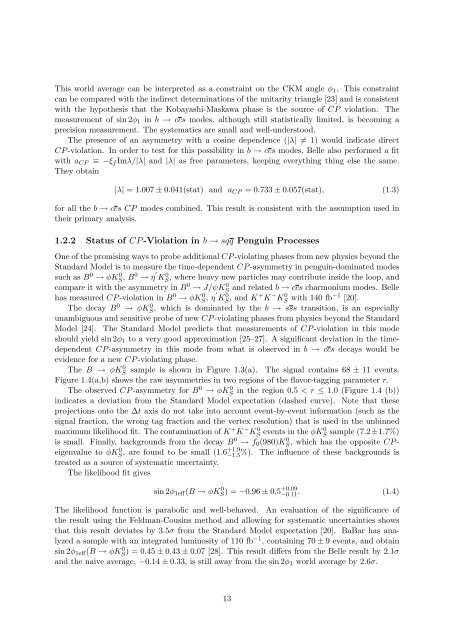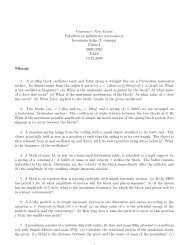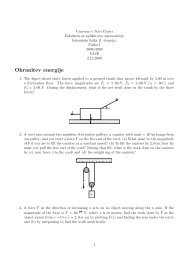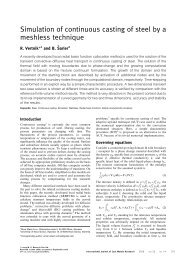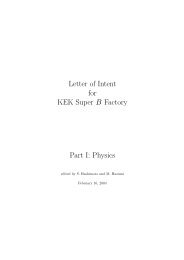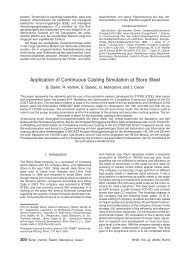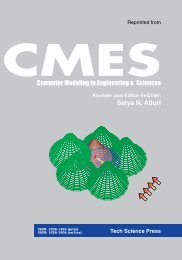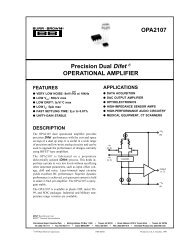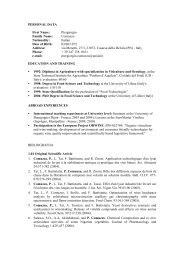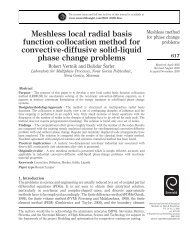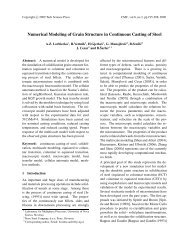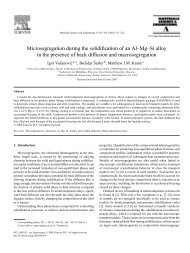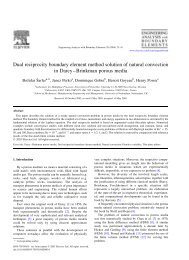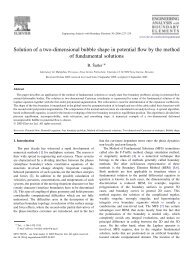Letter of Intent for KEK Super B Factory Part I: Physics
Letter of Intent for KEK Super B Factory Part I: Physics
Letter of Intent for KEK Super B Factory Part I: Physics
You also want an ePaper? Increase the reach of your titles
YUMPU automatically turns print PDFs into web optimized ePapers that Google loves.
This world average can be interpreted as a constraint on the CKM angle φ1. This constraint<br />
can be compared with the indirect determinations <strong>of</strong> the unitarity triangle [23] and is consistent<br />
with the hypothesis that the Kobayashi-Maskawa phase is the source <strong>of</strong> CP violation. The<br />
measurement <strong>of</strong> sin 2φ1 in b → ccs modes, although still statistically limited, is becoming a<br />
precision measurement. The systematics are small and well-understood.<br />
The presence <strong>of</strong> an asymmetry with a cosine dependence (|λ| = 1) would indicate direct<br />
CP -violation. In order to test <strong>for</strong> this possibility in b → ccs modes, Belle also per<strong>for</strong>med a fit<br />
with aCP ≡ −ξf Imλ/|λ| and |λ| as free parameters, keeping everything thing else the same.<br />
They obtain<br />
|λ| = 1.007 ± 0.041(stat) and aCP = 0.733 ± 0.057(stat), (1.3)<br />
<strong>for</strong> all the b → ccs CP modes combined. This result is consistent with the assumption used in<br />
their primary analysis.<br />
1.2.2 Status <strong>of</strong> CP -Violation in b → sqq Penguin Processes<br />
One <strong>of</strong> the promising ways to probe additional CP -violating phases from new physics beyond the<br />
Standard Model is to measure the time-dependent CP -asymmetry in penguin-dominated modes<br />
such as B0 → φK0 S , B0 → η ′<br />
K0 S , where heavy new particles may contribute inside the loop, and<br />
compare it with the asymmetry in B0 → J/ψK0 S and related b → ccs charmonium modes. Belle<br />
has measured CP -violation in B0 → φK0 S , η′ K0 S , and K+ K−K 0 S with 140 fb−1 [20].<br />
The decay B0 → φK0 S , which is dominated by the b → sss transition, is an especially<br />
unambiguous and sensitive probe <strong>of</strong> new CP -violating phases from physics beyond the Standard<br />
Model [24]. The Standard Model predicts that measurements <strong>of</strong> CP -violation in this mode<br />
should yield sin 2φ1 to a very good approximation [25–27]. A significant deviation in the timedependent<br />
CP -asymmetry in this mode from what is observed in b → ccs decays would be<br />
evidence <strong>for</strong> a new CP -violating phase.<br />
The B → φK0 S sample is shown in Figure 1.3(a). The signal contains 68 ± 11 events.<br />
Figure 1.4(a,b) shows the raw asymmetries in two regions <strong>of</strong> the flavor-tagging parameter r.<br />
The observed CP -asymmetry <strong>for</strong> B0 → φK0 S in the region 0.5 < r ≤ 1.0 (Figure 1.4 (b))<br />
indicates a deviation from the Standard Model expectation (dashed curve). Note that these<br />
projections onto the ∆t axis do not take into account event-by-event in<strong>for</strong>mation (such as the<br />
signal fraction, the wrong tag fraction and the vertex resolution) that is used in the unbinned<br />
maximum likelihood fit. The contamination <strong>of</strong> K + K−K 0 S events in the φK0 S sample (7.2±1.7%)<br />
is small. Finally, backgrounds from the decay B0 → f0(980)K0 S , which has the opposite CP -<br />
eigenvalue to φK0 S , are found to be small (1.6+1.9 −1.5 %). The influence <strong>of</strong> these backgrounds is<br />
treated as a source <strong>of</strong> systematic uncertainty.<br />
The likelihood fit gives<br />
sin 2φ1eff(B → φK 0 S) = −0.96 ± 0.5 +0.09<br />
−0.11 . (1.4)<br />
The likelihood function is parabolic and well-behaved. An evaluation <strong>of</strong> the significance <strong>of</strong><br />
the result using the Feldman-Cousins method and allowing <strong>for</strong> systematic uncertainties shows<br />
that this result deviates by 3.5σ from the Standard Model expectation [20]. BaBar has analyzed<br />
a sample with an integrated luminosity <strong>of</strong> 110 fb−1 , containing 70 ± 9 events, and obtain<br />
sin 2φ1eff(B → φK0 S ) = 0.45 ± 0.43 ± 0.07 [28]. This result differs from the Belle result by 2.1σ<br />
and the naive average, −0.14 ± 0.33, is still away from the sin 2φ1 world average by 2.6σ.<br />
13


